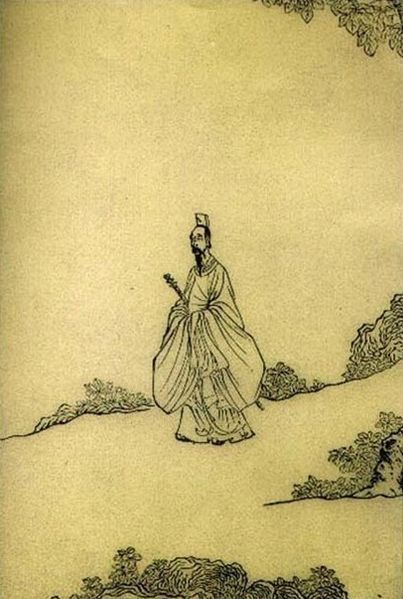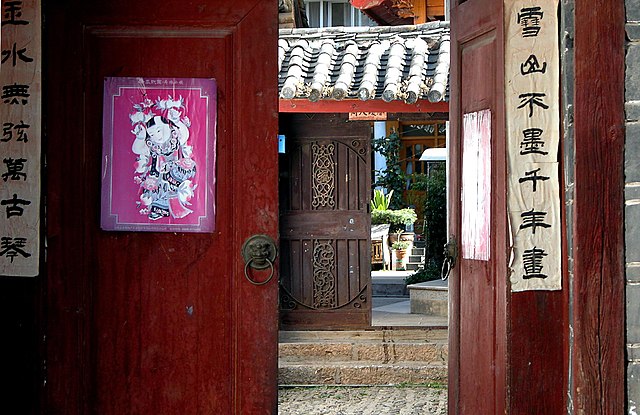The Chu Ci, variously translated as Verses of Chu, Songs of Chu, or Elegies of Chu, is an ancient anthology of Chinese poetry including works traditionally attributed mainly to Qu Yuan and Song Yu from the Warring States period, as well as a large number of works composed during the Han dynasty several centuries later. The traditional version of the Chu Ci contains 17 major sections, anthologized with its current contents by Wang Yi, a 2nd-century AD librarian who served under Emperor Shun of Han. Classical Chinese poetry prior to the Qin dynasty is largely known through the Chu Ci and the Classic of Poetry.
Qu Yuan Sang while Walking (Quzi xingyin tu 屈子行吟圖), by Chen Hongshou (1616)
Detail of shou jie (shipping transit pass) issued to Prince Qi. Gold inscriptions on bronze in the shape of bamboo, issued by King Huai of Chu to the state of E, in 323 BCE.
A depiction of Qu Yuan from an early 17th-century book
Tomb Beast-Guard (Zhenmushou). 5th - 3rd century BCE, Kingdom of Chu, Southern China.
Chinese poetry is poetry written, spoken, or chanted in the Chinese language, and a part of the Chinese literature. While this last term comprises Classical Chinese, Standard Chinese, Mandarin Chinese, Yue Chinese, and other historical and vernacular forms of the language, its poetry generally falls into one of two primary types, Classical Chinese poetry and Modern Chinese poetry.
"Quatrain on Heavenly Mountain" by Emperor Gaozong
Hand-painted Chinese New Year's dui lian (對聯 "couplet"), a by-product of Chinese poetry, pasted on the sides of doors leading to people's homes, at Lijiang City, Yunnan.
A Tang dynasty era copy of the preface to the Lantingji Xu poems composed at the Orchid Pavilion Gathering, originally attributed to Wang Xizhi (303–361 AD) of the Jin dynasty







